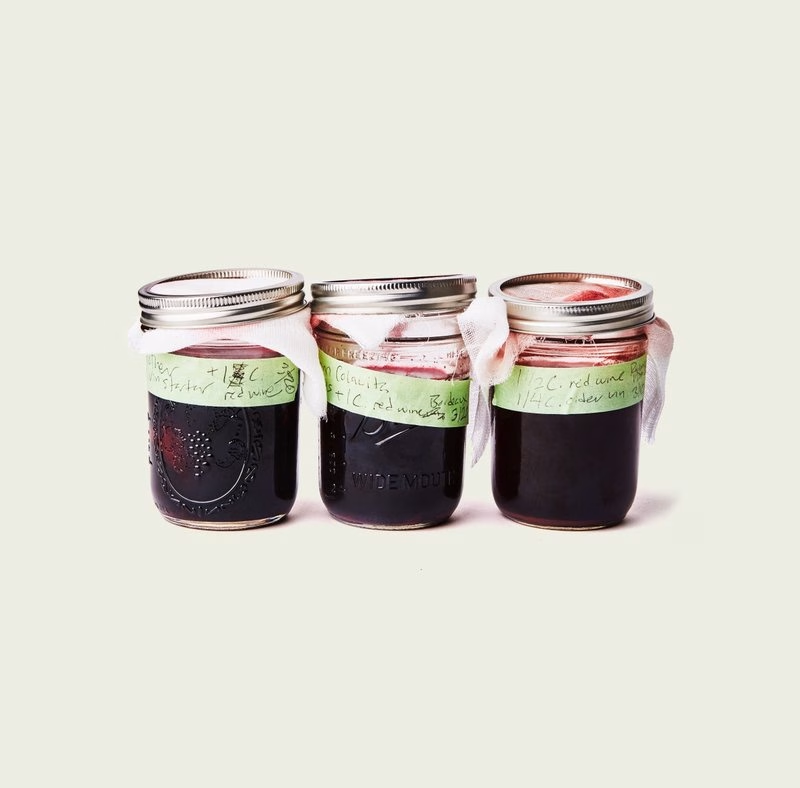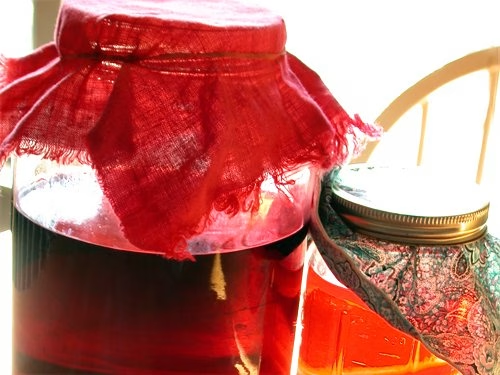
Introduction
Have you ever thought about how delightful it would be to create your own **Homemade Vinegar**? Not only is it a fantastic way to add flavors to your dishes, but it also brings nostalgia and a touch of personal flair to your kitchen. Homemade vinegar has deep roots in various cultures, dating back thousands of years. From balsamic to apple cider varieties, it’s popular among chefs and home cooks alike for its versatility. In this article, you’ll discover different *Homemade Vinegar ingredients*, learn *how to make Homemade Vinegar at home*, and explore *Homemade Vinegar variations* that you can easily whip up.
Get ready to embark on a culinary adventure that will not only delight your taste buds but also impress your family and friends!
Ingredients
Making your own vinegar at home is not only satisfying but also allows you to control the flavors. Below is a list of all the necessary ingredients you’ll need:
| Ingredient | Measurement | Description |
|---|---|---|
| Fruit (apples, grapes, or cherries) | 4 cups | *Fresh fruits add natural sweetness and depth to your Homemade Vinegar.* |
| Water | 4 cups | *Filtered water is best to ensure clean fermentation.* |
| Sugar | 1 cup | *Sugar helps kick-start the fermentation process for a robust flavor.* |
| Mother of vinegar (or unfiltered vinegar) | 1 cup | *The *Mother* is essential for fermentation, giving your Homemade Vinegar its tangy character.* |
Using these fundamental ingredients, you can experiment and create delicious *Homemade Vinegar sauces* or even infuse them with herbs and spices.
Step-by-Step Instructions
Crafting your own vinegar is a straightforward process. Follow these simple steps to have your very own Homemade Vinegar in no time!
- Step 1: Prepare the Fruit – Begin by washing your fruit thoroughly. If using apples, chop them into small pieces, including the cores, as they add flavor. The more varied the fruit, the more complex the flavor of your vinegar will be.
- Step 2: Combine Ingredients – In a large glass jar, combine the chopped fruit, sugar, and water. Mix well until the sugar dissolves, creating a sweet base for fermentation.
- Step 3: Add the Vinegar Mother – Introduce the Mother of vinegar by adding it to your jar. If you’re using unfiltered vinegar, add it here. This step is crucial as it transforms your mixture into vinegar over time.
- Step 4: Cover and Store – Cover the jar with a clean cloth and secure it with a rubber band. This allows airflow while keeping out dust and insects. Store the jar in a dark, warm place (around 60-80°F) for about 3 to 4 weeks.
- Step 5: Taste and Adjust – After a few weeks, taste your mixture. If it’s to your liking, strain out the solids, and transfer the liquid into airtight bottles. If you prefer a stronger vinegar, let it ferment for another week or two. The longer it ferments, the stronger the flavor will be.
Pro Tips
1. Experiment with different fruits and herbs. Have you ever thought about using *pears* or *raspberries*? They make incredible *Homemade Vinegar variations*.
2. Make sure to use a clean jar to prevent any unwanted bacteria from spoiling your vinegar.
3. Keep an eye on your vinegar during fermentation. Sometimes you might see a film on top, which is perfectly normal—it’s just more mother forming!
4. Store your finished vinegar in a cool, dark place to maintain its freshness for months.
5. For a fizzier vinegar, add a little more sugar during the fermentation process. It adds a delightful sparkle!
Nutritional Information
Here’s a basic breakdown of the nutritional content per tablespoon (15 ml) of Homemade Vinegar:
| Nutrient | Amount |
|---|---|
| Calories | 3 |
| Protein | 0 g |
| Carbohydrates | 0.1 g |
| Saturated Fats | 0 g |
| Fiber | 0 g |
| Cholesterol | 0 mg |
| Sugars | 0 g |
| Total Fat | 0 g |
Homemade vinegar might be low in calories, but it packs a punch in flavor!
FAQs
What is the best way to store Homemade Vinegar?
Keep your Homemade Vinegar in a cool, dark place in an airtight container to preserve its flavor and quality.
Can Homemade Vinegar be made vegan or gluten-free?
Absolutely! As long as you use vegan-friendly fruits and sugar, your vinegar will be completely vegan. It’s naturally gluten-free, too!
What are the best side dishes to serve with Homemade Vinegar?
Homemade Vinegar is a fantastic addition to salads, marinades, and even as a drizzle over roasted veggies. It can elevate many dishes!
How long does it take to prepare Homemade Vinegar?
The preparation time is about an hour, but fermentation will take around 3 to 4 weeks depending on your desired strength.
Can I freeze Homemade Vinegar for later?
Freezing is not recommended as it may alter the flavor and texture. Instead, store it in a cool, dark place.
How can I use Homemade Vinegar in my cooking?
Use it to enhance flavors in dressings, marinades, or as a tangy kick to your dishes. It’s incredibly versatile!
Why is there a film on top of my vinegar?
That’s the vinegar mother forming! It’s a sign that your vinegar is fermenting properly.
Can I use store-bought vinegar as a starter?
Yes! Unfiltered, raw vinegar with active cultures works well as a starter for your Homemade Vinegar.
In no time, you’ll become a pro at making *Homemade Vinegar*! It’s a delightful process that allows you to customize flavors and experiment with diverse ingredients. Whether you’re drizzling it over salads or using it for pickling, you’ll appreciate the freshness and joy of your creation.
*Tried this Homemade Vinegar recipe? Let us know your experience in the comments!* Enjoy the art of vinegar-making and happy cooking!






